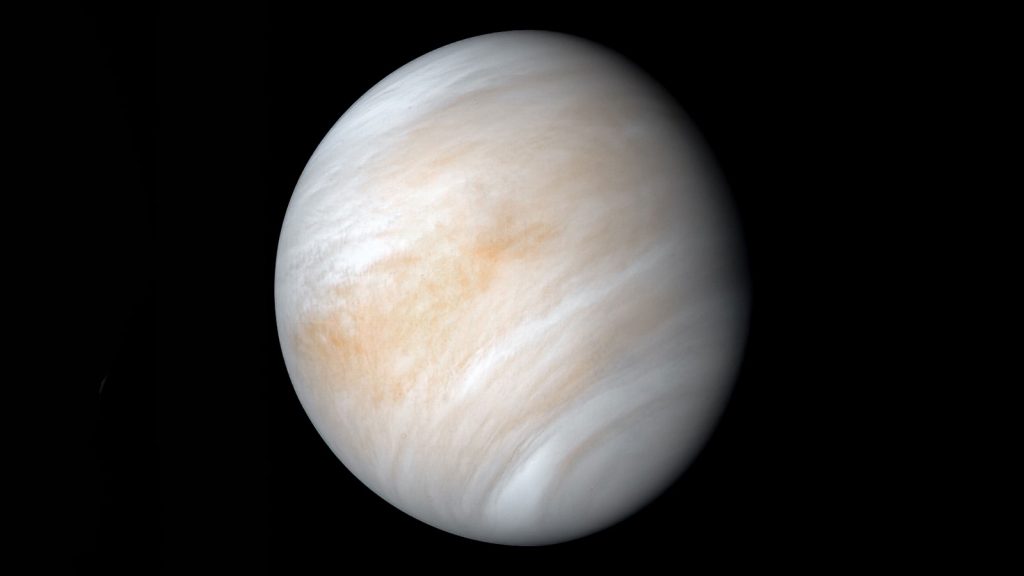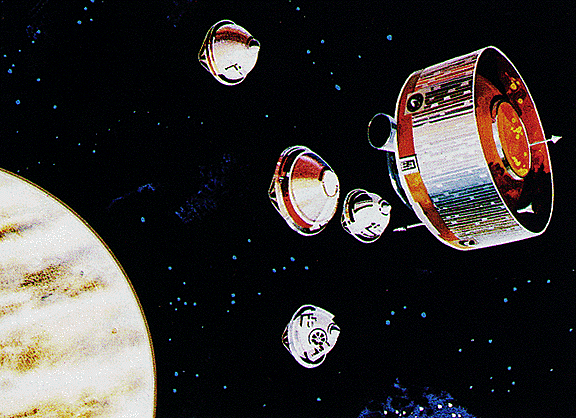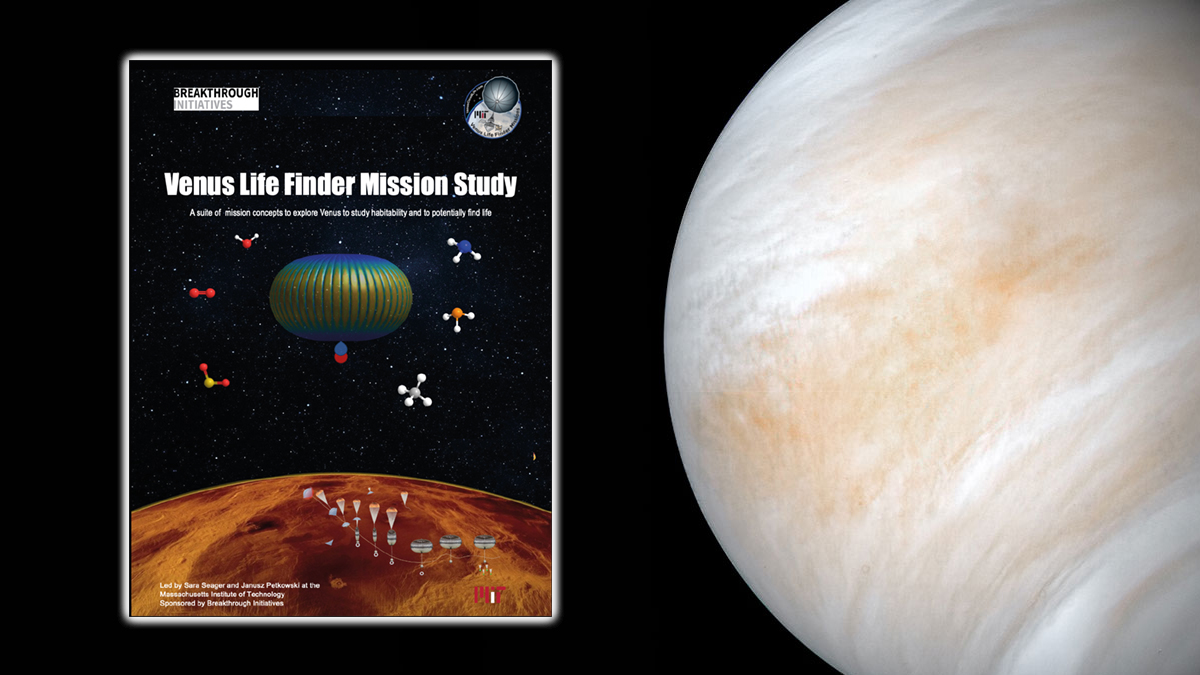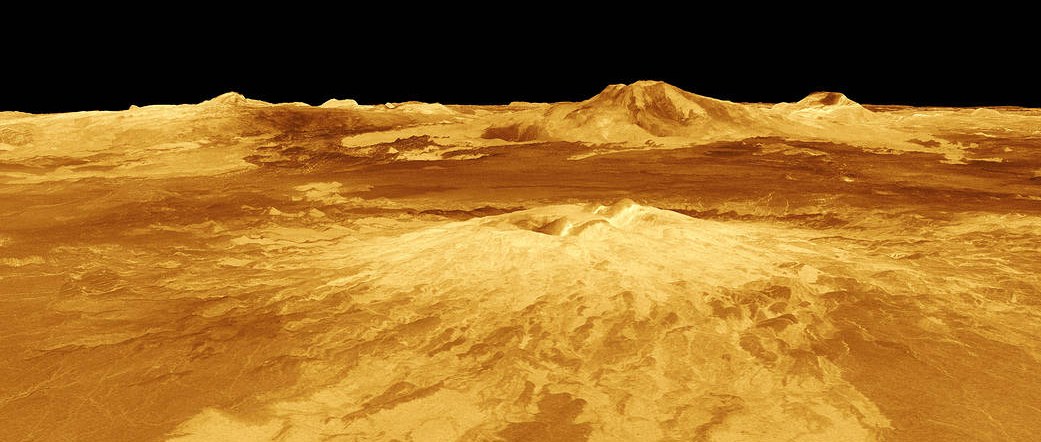One year after the announcement of phosphine (PH3) gas in the Venus atmosphere (1), the discovery remains highly controversial.
The original PH3 announcement is based on a single-millimeter wavelength absorption line, the PH3 1–0 rotational transition at 1.123 mm wavelength. The spectral feature was observed by two independent facilities, both James Clerk Maxwell (JCMT) and Atacama Large Millimeter Array (ALMA) telescopes (1). The most recent confidence levels are 6 sand 7.7 s respectively (2).
Since the initial announcement, several papers have questioned the Venus PH3 discovery. One set questions whether the signal is real, based on independent data analyses (3–6). Another set questions whether the spectral feature is caused by above-the-clouds sulfur dioxide (SO2) rather than cloud-level PH3 (4, 7). Below we provide an overview of the scientific debate since the initial announcement from September 2020.
Is the signal real?
The ALMA PH3 signal has been challenged by several groups including Ignas Snellen (2020) (5), Geronimo Villanueva (2021) (4), and Alex Akins (2021) (3). Professor Jane Greaves and team replied to their arguments in three subsequent papers (2, 8, 9) and demonstrated a recovery of the ALMA signal using several methods. One method addresses the criticism of data detrending using a 12th order polynomial by using a non-subjective method without a polynomial fitting procedure (8, 9).
The JCMT detection was challenged by Mark Thompson in 2021 (6). In the team’s response, Jane Greaves uses data analysis methods similar to Thompson and recovered the signal (8, 9). Other groups have also been able to recover the JCMT signal (4, 7).
Motivated by community scrutiny of the data, the ALMA observatory staff revisited their calibration procedure and found that their standard calibration procedures are unsuitable for Venus, an exceptionally bright target. The Joint ALMA Observatory then issued a revised calibration of the data (https://www.almaobservatory.org/en/announcements/newly-processed-venus-alma-data-made-available-to-the-community/). Jane Greaves reanalyzed the data and still recovered the signal (8, 9), although at a lower significance than the original analysis.
Where in the atmosphere is the PH3 coming from?
The altitude from which the JCMT and ALMA signals originate is not easy to determine. One reason is that in ensuring any possible instrumental artefacts are removed, the spectral feature line wings are also suppressed. In other words, the spectral feature line wing strength is very sensitive to the data analysis procedure. The line wing contains information at the atmospheric altitudes where the signal originates. The altitude matters because if we want to associate phosphine with life, it has to originate at atmospheric layers where the temperature is suitable for life.
Two papers (4, 7) push the idea that the signal is SO2 and must originate from altitudes above the clouds, in the “mesosphere” where it is too cold for life. The counter argument is the signal cannot be SO2 (2) based on fortuitous, nearly concurrent measurements of SO2 (see next point below).
We also emphasize that PH3 itself is not likely present in the mesosphere because the photochemical destruction of PH3above the cloud layers is very fast, there, PH3 has a half-life of seconds (10). Furthermore, IR observations provide strong upper limits on the abundance of PH3 above the clouds (in the low ppb to sub ppb range) (11, 12). One possibility is that vertical winds and turbulent movements of the atmosphere are much more vigorous and efficient above the clouds than expected, carrying the PH3 into the mesosphere very rapidly.
The detection of PH3 by Pioneer Venus in the cloud layers (13) points to the origin of PH3 being in the cloud layers.
Is the signal from PH3 or SO2?
Several authors suggest that the signal from JCMT telescope measurements can be attributed to mesospheric SO2 and not PH3 (4, 7). Fortunately, a JCMT observation just days before the JCMT PH3 observations helps to rule out SO2contamination. For background, the SO2 spectral feature that partially overlaps with the PH3 spectral feature is a weak line of a higher transition than spectral features normally used to detect and measure SO2. There needs to be a lot of SO2present to make the weak line visible. Jane Greaves and team argue that this near-simultaneous observation of other SO2absorption spectral features with JCMT means that the potential SO2 line-contamination is less than 10% of the observed signal (2), ruling out SO2 as a plausible candidate for the original JCMT signal. PH3 therefore remains consistent with the observed JCMT signal. (There always remains a slim possibility that the spectral feature is caused by another unknown gas altogether.)
Independent evidence for PH3 in the clouds
A reanalysis of the legacy data collected by the NASA Pioneer Venus Neutral Gas Mass Spectrometer (LNMS) (13) at the altitude of 51.3 km shows evidence of PH3 in the clouds of Venus. The mass spectrometer ionized gases and accelerated them through a magnetic field, thus separating parent ions by mass and charge. The registered P-containing ions (+P, but also +PH3, +PH2, and +PH2D ) are in a pattern associated with PH3 over other P-containing gases, via detection of PH3fragmentation ions, primarily by detection of the phosphorus ion +P, but also +PH3, +PH2, and +PH2D ions. +P is most strongly associated with PH3, for two key reasons. First, PH3 is the only P-containing molecule that fits the data and is in gas form at Venus’ 51.3 km altitude. Second, +P does not overlap with any other neutral gas mass fragment expected from the Venus atmosphere, giving +P a unique and robust detection. The PH3 abundance is in the mid-to-high ppb range. One might argue there could be a very tiny amount of, e.g., phosphoric acid vapor that could have fragmented into +P, but the corroborating acid fragmentation ions were not detected and should have been.
We stand by the existence of Venus atmospheric phosphine, while acknowledging that the debate may never be settled until a return to in situ measurements in the Venus atmosphere.
- J. S. Greaves, et al., Phosphine gas in the cloud decks of Venus. Nat. Astron. 5, 655–664 (2021).
- J. S. Greaves, et al., Low Levels of Sulphur Dioxide Contamination of Phosphine Spectra from Venus’ Atmosphere. arXiv Prepr. arXiv2108.08393 (2021).
- A. B. Akins, A. P. Lincowski, V. S. Meadows, P. G. Steffes, Complications in the ALMA Detection of Phosphine at Venus. Astrophys. J. Lett. 907, L27 (2021).
- G. L. Villanueva, et al., No evidence of phosphine in the atmosphere of Venus from independent analyses. Nat. Astron. 5, 631–635 (2021).
- I. A. G. Snellen, L. Guzman-Ramirez, M. R. Hogerheijde, A. P. S. Hygate, F. F. S. van der Tak, Re-analysis of the 267 GHz ALMA observations of Venus-No statistically significant detection of phosphine. Astron. Astrophys. 644, L2 (2020).
- M. A. Thompson, The statistical reliability of 267-GHz JCMT observations of Venus: no significant evidence for phosphine absorption. Mon. Not. R. Astron. Soc. Lett. 501, L18–L22 (2021).
- A. P. Lincowski, et al., Claimed detection of PH3 in the clouds of Venus is consistent with mesospheric SO2. Astrophys. J. Lett. 908, L44-52 (2021).
- J. S. Greaves, et al., Reply to: No evidence of phosphine in the atmosphere of Venus from independent analyses. Nat. Astron. 5, 636–639 (2021).
- J. S. Greaves, et al., Addendum: Phosphine gas in the cloud deck of Venus. Nat. Astron. 5, 726–728 (2021).
- W. Bains, et al., Phosphine on Venus Cannot be Explained by Conventional Processes. Astrobiology 21 (2021).
- T. Encrenaz, et al., A stringent upper limit of the PH3 abundance at the cloud top of Venus. Astron. Astrophys. 643, L5 (2020).
- L. Trompet, et al., Phosphine in Venus’ atmosphere: Detection attempts and upper limits above the cloud top assessed from the SOIR/VEx spectra. Astron. Astrophys. 645, L4 (2020).
- R. Mogul, S. S. Limaye, M. J. Way, J. A. Cordova, Venus’ Mass Spectra Show Signs of Disequilibria in the Middle Clouds. Geophys. Res. Lett., e2020GL091327 (2021).





